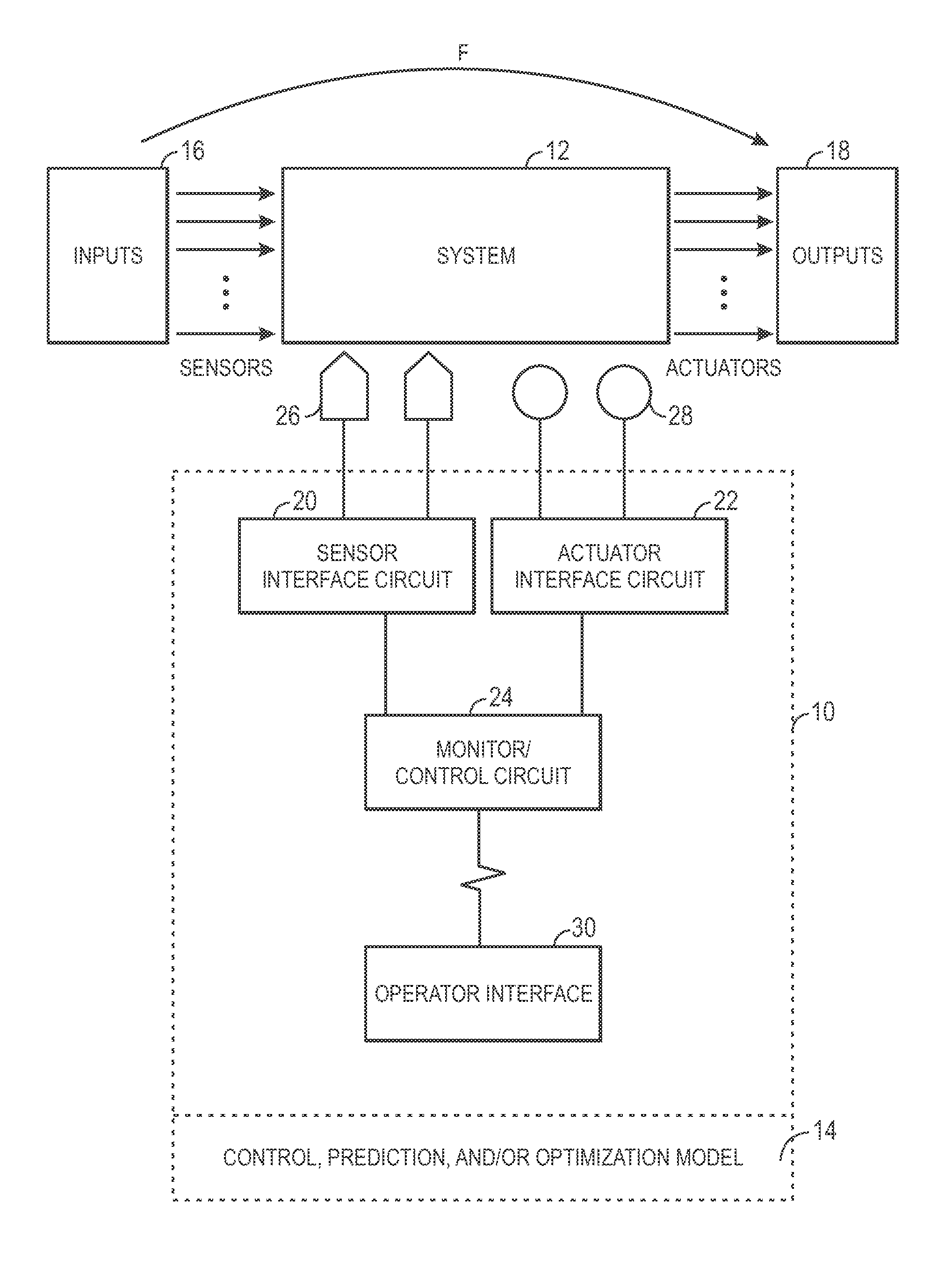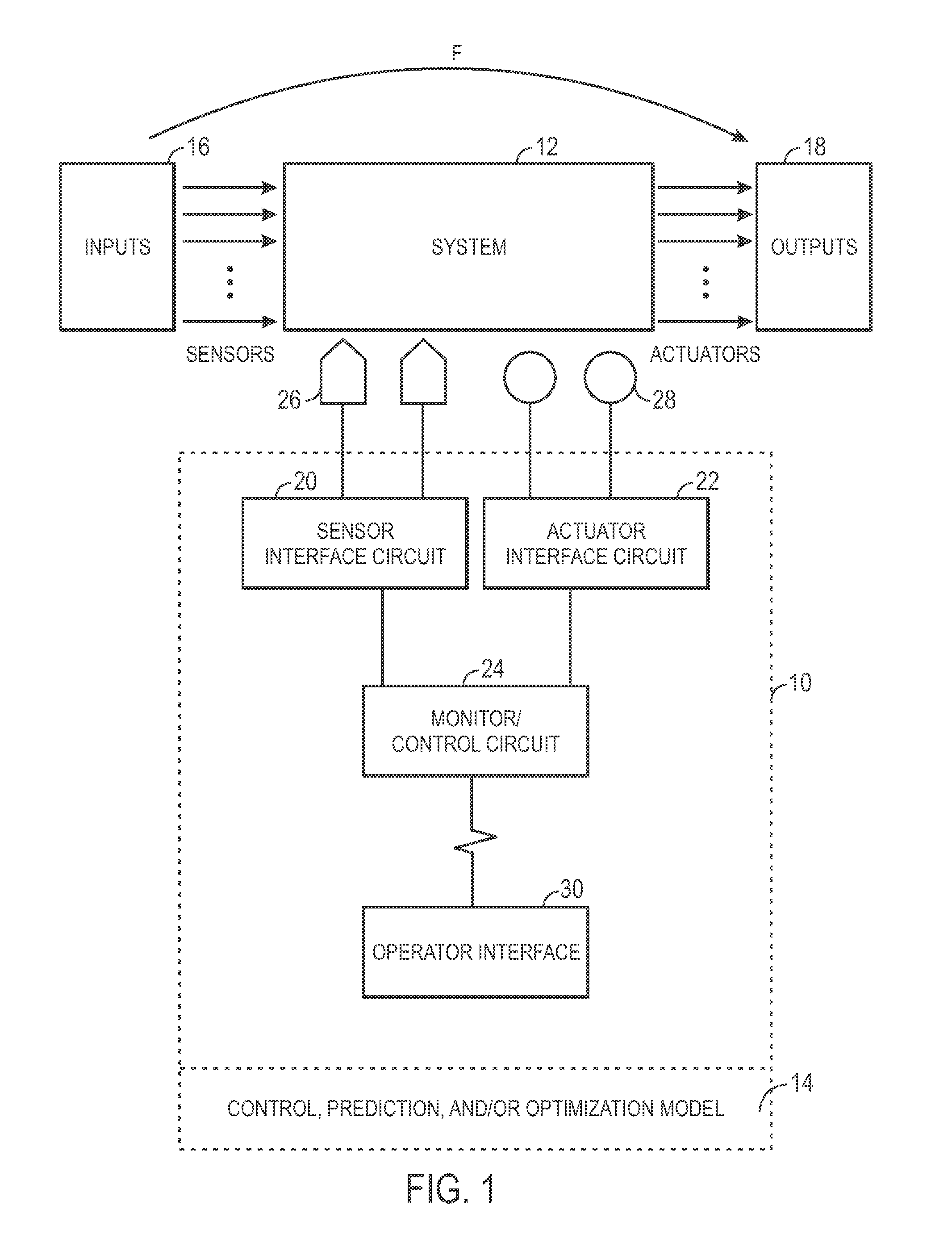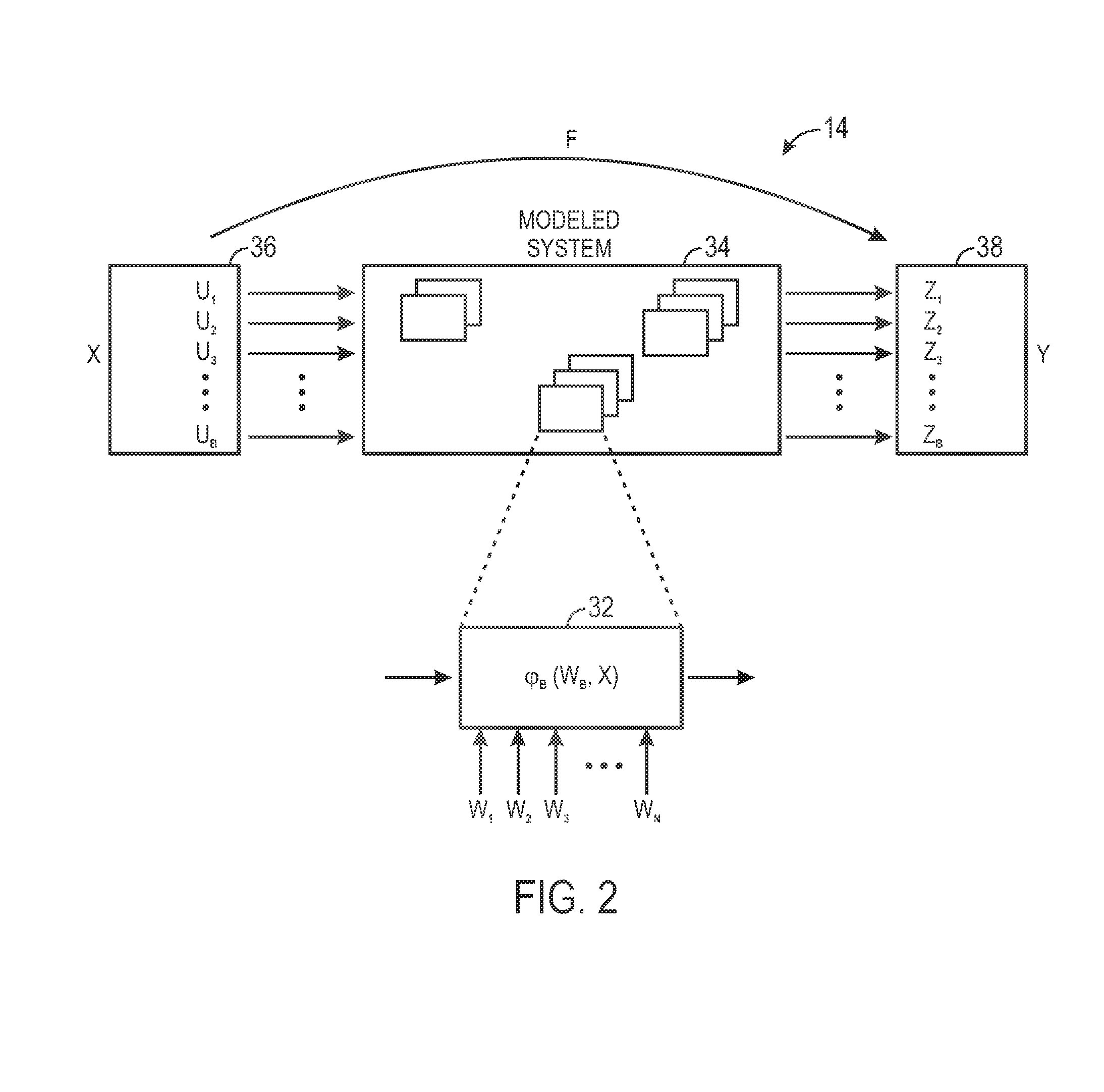Empirical modeling with globally enforced general constraints
a global enforced, general constraint technology, applied in biological models, adaptive control, instruments, etc., can solve the problems of insufficient data fit, insufficient empirical model usefulness, and inability to accurately extrapolate results
- Summary
- Abstract
- Description
- Claims
- Application Information
AI Technical Summary
Benefits of technology
Problems solved by technology
Method used
Image
Examples
Embodiment Construction
[0015]The present disclosure provides novel techniques for defining controllers, predictive systems, and / or optimization systems by utilizing empirical models that are capable of incorporating desired extrapolation properties, such as a candidate basis / kernel function φb(•), as factors used to determine the structure of the empirical model. Once the model has been defined, the model may then be utilized in controller embodiments, model predictive control embodiments, environmental management embodiments, production performance management embodiments, plant operations optimization embodiments, industrial scheduling systems embodiments, and so forth.
[0016]An empirical model may be first defined using the following general equation:
f(x)=∑bNBϕb(wb,x)
[0017]where xεNu is the Nu-dimensional input vector, ƒ(•):nu→Ny is a linear or nonlinear mapping from the Nu-dimensional input space to Ny-dimensional output space, wb is the parameters of the basis / kernel function, φb(•) that are determined...
PUM
 Login to View More
Login to View More Abstract
Description
Claims
Application Information
 Login to View More
Login to View More - R&D
- Intellectual Property
- Life Sciences
- Materials
- Tech Scout
- Unparalleled Data Quality
- Higher Quality Content
- 60% Fewer Hallucinations
Browse by: Latest US Patents, China's latest patents, Technical Efficacy Thesaurus, Application Domain, Technology Topic, Popular Technical Reports.
© 2025 PatSnap. All rights reserved.Legal|Privacy policy|Modern Slavery Act Transparency Statement|Sitemap|About US| Contact US: help@patsnap.com



